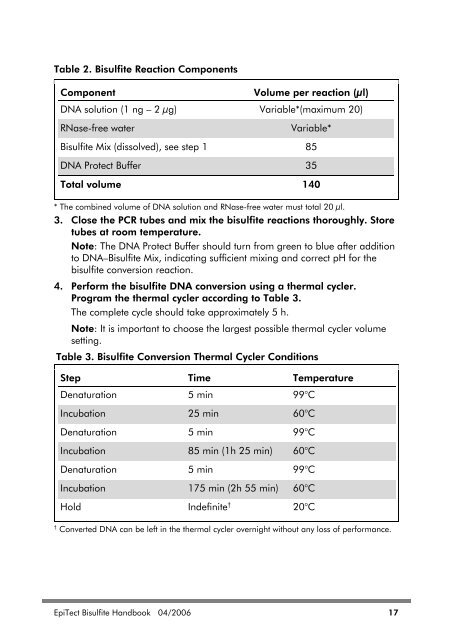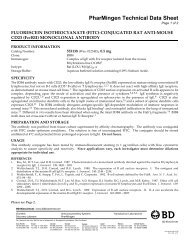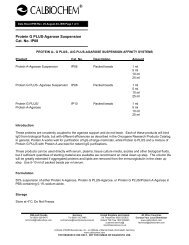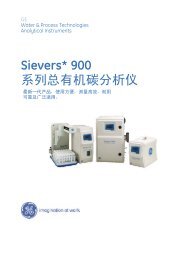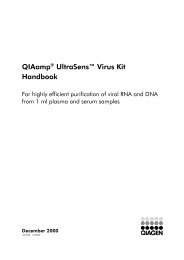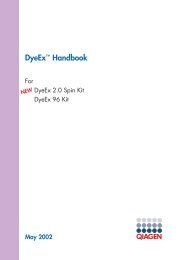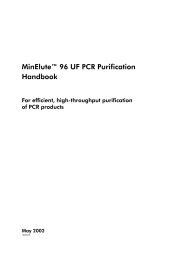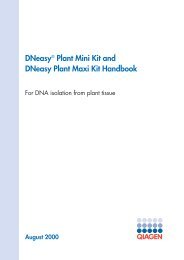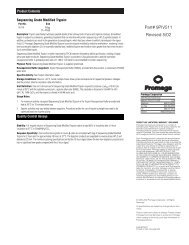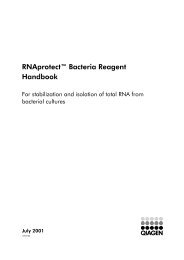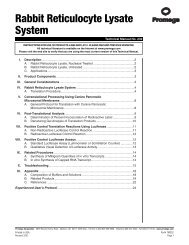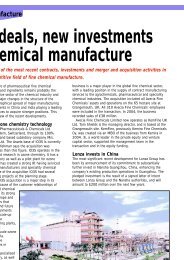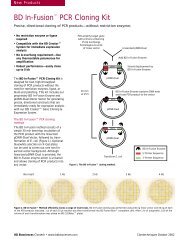EpiTect Bisulfite Handbook
EpiTect Bisulfite Handbook
EpiTect Bisulfite Handbook
You also want an ePaper? Increase the reach of your titles
YUMPU automatically turns print PDFs into web optimized ePapers that Google loves.
Table 2. <strong>Bisulfite</strong> Reaction Components<br />
Component Volume per reaction (µl)<br />
DNA solution (1 ng – 2 µg) Variable*(maximum 20)<br />
RNase-free water Variable*<br />
<strong>Bisulfite</strong> Mix (dissolved), see step 1 85<br />
DNA Protect Buffer 35<br />
Total volume 140<br />
* The combined volume of DNA solution and RNase-free water must total 20 µl.<br />
3. Close the PCR tubes and mix the bisulfite reactions thoroughly. Store<br />
tubes at room temperature.<br />
Note: The DNA Protect Buffer should turn from green to blue after addition<br />
to DNA–<strong>Bisulfite</strong> Mix, indicating sufficient mixing and correct pH for the<br />
bisulfite conversion reaction.<br />
4. Perform the bisulfite DNA conversion using a thermal cycler.<br />
Program the thermal cycler according to Table 3.<br />
The complete cycle should take approximately 5 h.<br />
Note: It is important to choose the largest possible thermal cycler volume<br />
setting.<br />
Table 3. <strong>Bisulfite</strong> Conversion Thermal Cycler Conditions<br />
Step Time Temperature<br />
Denaturation 5 min 99°C<br />
Incubation 25 min 60°C<br />
Denaturation 5 min 99°C<br />
Incubation 85 min (1h 25 min) 60°C<br />
Denaturation 5 min 99°C<br />
Incubation 175 min (2h 55 min) 60°C<br />
Hold Indefinite † 20°C<br />
† Converted DNA can be left in the thermal cycler overnight without any loss of performance.<br />
<strong>EpiTect</strong> <strong>Bisulfite</strong> <strong>Handbook</strong> 04/2006 17


